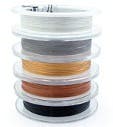Beading Materials
Below are explanations of some common materials used for beading:
Eye Pins
Eye pins are wires with a loop on one end and a straight portion of wire where beads can be strung. Length and gauges vary; most earrings use 24-gauge eye pins from 1 1/2 to 2 1/2 inches.
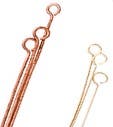

Head Pins
Head pins are pieces of wire that have a stop end like a fine nailhead. A bead slides onto the head pin and stops at the head. Lengths and gauges vary; most earrings use 24-gauge head pins from 1 1/2 to 2 1/2 inches.
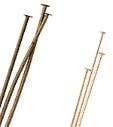

Jump Rings
Jump rings are one of the most versatile findings used in jewelry-making. They come in various sizes, gauges and metals. They are measured by diameter (width) and gauge (weight).
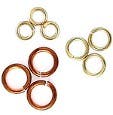

Ear Wires
Ear wires come in many different styles. Regular fishhook-style ear wires are the most common and the easiest to make yourself. The recommended weight for ear wires is either 22- or 20-gauge.


Crimp Tubes
Crimp tubes are small soft metal cylinders that can be flattened or formed around flexible beading wire to secure the ends. They are an essential component for bead stringing projects.


Wire
Wire comes in many sizes or gauges. Gauge is the measured diameter of the wire. The higher the number, the thinner the wire. Wire can be tempered soft, half-hard or hard, which refers to its stiffness. Copper, silver and gold-filled wire are most commonly used for jewelry.
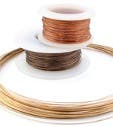

Flexible Beading Wire
Flexible beading wire comes in several weights from .010- to .026-inch in diameter and is designed for stringing. It is available in precious metals, can have several colors and is made from seven to 49 strands of steel wire, twisted and encased in a flexible plastic coating. Ends are finished with crimp beads using either crimping or chain-nose pliers.
